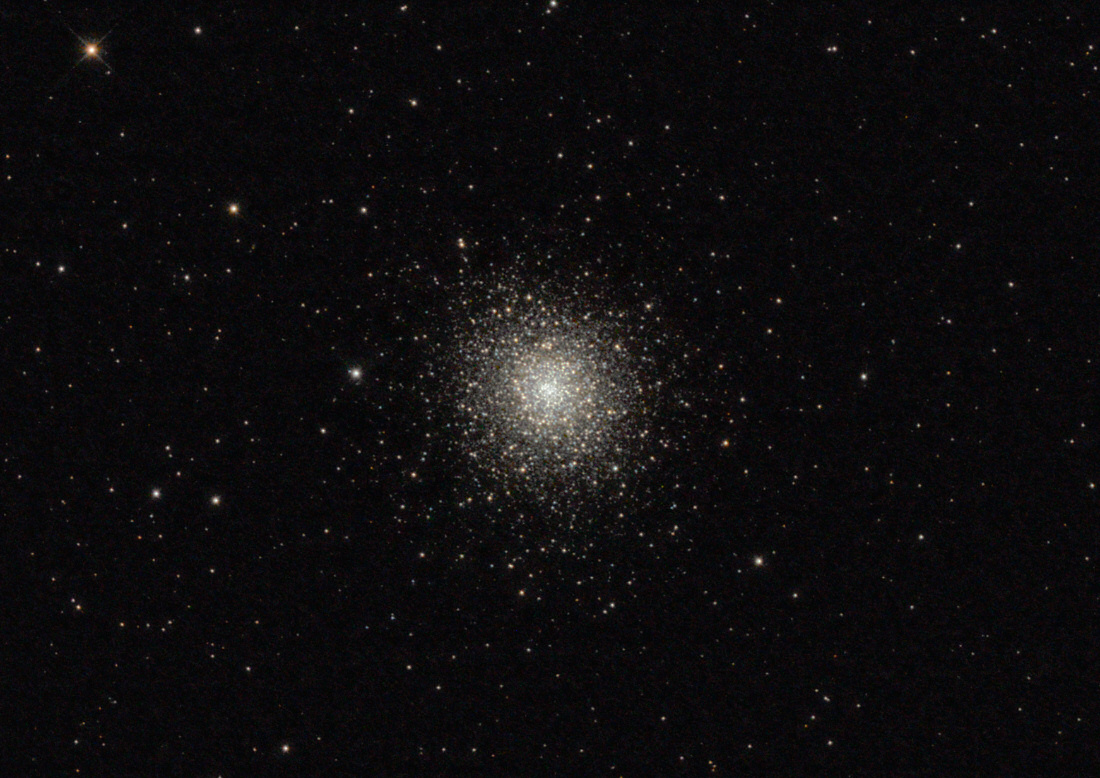
M92 (NGC 6341) in Hercules is about 26.000 light years distant, only little more than its brighter apparent neighbor M13. M92 is only slightly less bright but about 1/3 less extended than M13, and much more condensed. Its 14' angular extension corresponds to a true diameter of 110 light years, and may have a mass of up to 330.000 suns. M92 is approaching us at 112 km/s, and is thought to be about 16 billion years old.
The globular cluster M92 was first discovered by Johann Elert Bode in 1777. Charles Messier independently rediscovered and cataloged it in 1781. William Herschel was the first who resolved it into stars in 1783.
 M92, Wide Field, the full frame of this photograph.
M92, Wide Field, the full frame of this photograph.
Exposure Data
Observing Hints
M92 stands certainly in the shadow of it's more prominent neighbor, M13. However, if M13 didn't exist, M92 would be THE showpiece of Hercules. M92 is not as easily found as M13, but it is not very hard. Between Pi Herculis, that is the star in the northeast corner of the quadrangle (or keystone) of Hercules, and Rho (which a small distance to the east of Pi) there is a 5th magnitude star. Pi, Rho and this star form a small flat triangle which is characteristic in the finderscope. To find M92, center the 5th magnitude star on the crosshairs and move 6 degrees straight north. M92 is visible as a diffuse "star" in the finderscope, but less luminous and smaller than M13.
The brightest stars of M92 are of 12th magnitude, within the range of a 4" telescope and resolvable in an instrument that size. A 6" scope will yield a better view, but starting with 8" of aperture M92 appears as a remarkable globular cluster with a more condensed central region. M92 appears only half the size of M13, therefore higher magnifications may be applied. 200x and more can be used, it will still preserve the compactness of the cluster. M13 may be more luminous and larger, but some people prefer observing M92.